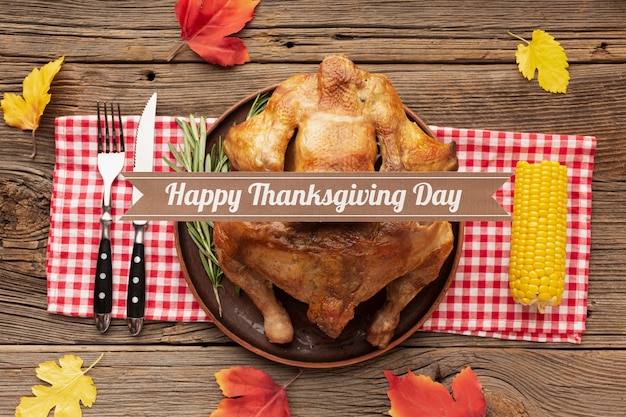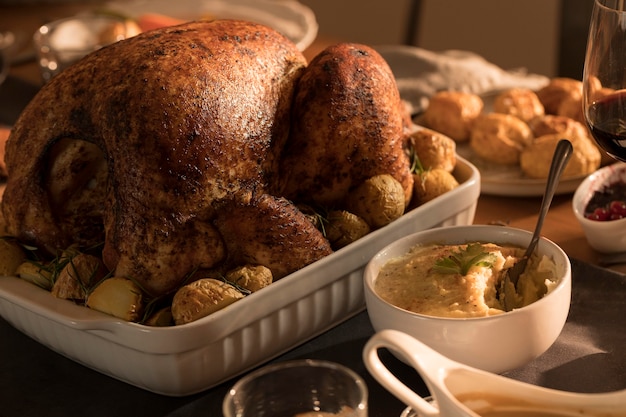The festive season is upon us, and with it comes the age-old question that divides families and ignites heated debates: should you cook the stuffing before putting it in the turkey? It’s a topic that's sparked endless discussions amongst friends and relatives, and it’s a question I've grappled with myself for years. You see, I used to be a firm believer in the "stuff it raw" school of thought, largely because that's how my Mum always did it. But over time, I realised there are some very good reasons why things are changing.
Part 1: A Bit of History

For generations, stuffing the turkey with raw ingredients was the traditional approach. Picture it: the bird nestled in the oven, the stuffing nestled inside, both cooking together, absorbing all those glorious turkey juices and becoming a symphony of flavors. It’s a beautiful image, isn't it? A culinary dance of tradition and comfort. And let’s be honest, it’s a technique that evokes a sense of nostalgia, a connection to those cherished holiday meals of the past.
Traditional Stuffing Recipe: A Blast from the Past
Here's a classic traditional stuffing recipe, similar to what my Mum used to make:
- Ingredients:
- Stale white bread, cubed (this was a key ingredient – you couldn’t just use fresh bread! It had to be a bit dry to prevent the stuffing from becoming soggy)
- Onions, chopped
- Celery, chopped
- Sage, chopped (the key herb for that quintessential stuffing flavor)
- Chicken stock (a good, homemade stock was essential, simmered for hours, full of flavour)
- Butter (for that extra richness)
- Salt and pepper (to taste, of course!)
- Instructions:
- Combine all the ingredients in a large bowl.
- Mix thoroughly, ensuring everything is evenly distributed.
- Stuff the turkey cavity loosely, leaving some space for the stuffing to cook evenly.
- Roast the turkey according to your chosen recipe instructions, ensuring the stuffing reaches an internal temperature of 165°F (74°C) throughout.
Simple, rustic, and undeniably delicious. But, as with many traditions, times change and we learn new things.
Part 2: The Rise of food safety Concerns

While the traditional method has its charm, the reality is that food safety concerns have led to a shift in thinking. The fact is, stuffing is essentially a prime breeding ground for bacteria.
Why Stuffing is a Bacteria Haven
Let’s break down why raw stuffing can be a risk:
- Temperature: The internal temperature of a turkey can be inconsistent, and the stuffing inside the cavity might not always reach the safe temperature of 165°F (74°C) required to kill off harmful bacteria.
- Moisture: Stuffing, by its very nature, is moist. And moisture is a prime environment for bacteria to flourish.
- Time: Stuffing can spend a considerable amount of time inside the turkey while it cooks, giving those pesky bacteria ample opportunity to multiply.
Now, I’m not trying to spread fear, but food poisoning is a real concern. It can cause unpleasant symptoms like nausea, vomiting, diarrhoea, and stomach cramps. Nobody wants to be sidelined during a festive gathering.
Part 3: Pre-Cooking the Stuffing: A Safer Approach

So, what’s the solution? The safer bet, and the one I now endorse, is to pre-cook your stuffing. It’s a small change with a big impact on food safety.
Pre-cooking techniques: Get that Stuffing Ready
Here are some ways to pre-cook your stuffing to perfection:
- In a Baking Dish: Spread the stuffing mixture in a greased baking dish and bake it in the oven for 30-40 minutes, or until it's golden brown and cooked through. The oven’s heat ensures even cooking, and you can easily check the internal temperature with a meat thermometer.
- On the Stovetop: Cook the stuffing in a saucepan over medium heat, stirring regularly, until heated through. This is a quick and easy option, particularly if you’re short on oven space.
Stuffing Placement: Inside or Outside the Turkey?
Once your stuffing is cooked, you have two options:
- Loosely Fill the Turkey Cavity: Place the pre-cooked stuffing loosely into the turkey cavity. It will still absorb some turkey juices, but it won’t be cooking inside the bird.
- Serve Separately: This is the most popular and recommended approach. It gives you more control over portions, ensuring everyone gets a generous helping.
I’ve found that pre-cooking doesn’t diminish the flavor in any way; in fact, I think it might even enhance it. The stuffing is beautifully fluffy, and the flavors seem more intense.
Part 4: Unlocking Turkey Flavour Without Raw Stuffing
You’ve probably thought: “But what about those delicious turkey juices? Won't pre-cooked stuffing be dry?” It’s a fair concern, and you want that moist, flavorful stuffing!
Tips for Turkey-Infused Flavor
Here’s how to get that delightful turkey flavor without putting the stuffing at risk:
- Turkey Broth Infusion: Add some turkey broth to the stuffing. You can use the drippings from the turkey to make your own broth, or you can buy ready-made broth.
- Gravy Drizzle: Drizzle a little gravy over the cooked stuffing. It adds moisture and a burst of flavor.
- Brief Turkey Soak: After the turkey is cooked and out of the oven, place the pre-cooked stuffing in the cavity for a few minutes to soak up some of the juices.
Don’t forget, you can always add ingredients like cranberries or chopped nuts to enhance the texture and flavor of your stuffing.
Part 5: Beyond Traditional: Stuffing Alternatives
If you’re still on the fence about stuffing the turkey or simply want to explore some different options, there are some fantastic stuffing alternatives that are just as delicious.
Sausage Stuffing: A Hearty Choice
Sausage stuffing is a popular choice that’s packed with flavor. You can use any type of sausage you enjoy, but italian sausage has a distinct flavor that works beautifully.
wild rice Stuffing: A Sophisticated Touch
Wild rice stuffing is a sophisticated option that’s both flavorful and visually appealing. It’s also a great choice for those who are gluten-free.
Cornbread Stuffing: A Southern Comfort
Cornbread stuffing is a delightful option, especially for Thanksgiving and other autumn gatherings. It has a warm and comforting flavor that perfectly complements the season.
Part 6: The Verdict is In: Pre-Cook Your Stuffing!
So, should you cook the stuffing before putting it in the turkey? My advice is an emphatic YES! It's the safest and most reliable way to ensure a perfectly cooked stuffing that’s delicious and free from food safety worries.
I understand the pull of tradition, but trust me, pre-cooking the stuffing is a smart move. It’s just as delicious, and it eliminates the risk of food poisoning.
Enjoy a stress-free holiday season knowing that your stuffing is safe and flavorful!
Part 7: FAQs: Answering Your Questions
1. Can I Stuff the Turkey with Cooked Stuffing and Roast it?
Yes, you can! Just make sure to fill the cavity loosely, giving the stuffing space to cook evenly.
2. How Long Do I Cook the Stuffing For?
The cooking time depends on the recipe and the method you choose. In general, aim for 30-40 minutes, or until the stuffing is golden brown and cooked through. Use a meat thermometer to check the internal temperature, ensuring it reaches at least 165°F (74°C).
3. Can I Reheat Stuffing That’s Been in the Turkey?
It's generally not recommended. It's tricky to ensure the stuffing reaches a safe temperature throughout. Serve your stuffing fresh or reheat it in a separate dish in the oven or microwave.
4. What Else Can I Put in the Turkey Cavity?
Besides stuffing, you can include a variety of other ingredients to enhance the turkey's flavor:
- Onions
- Celery
- Apples
- Lemons
- Herbs (like rosemary or thyme)
These ingredients will release their flavors as the turkey cooks.
5. Can I Make Stuffing Ahead of Time?
Absolutely! Cook the stuffing according to your chosen recipe, let it cool completely, and store it in an airtight container in the refrigerator for up to 3 days. When you’re ready to serve it, reheat it in the oven or microwave.
Part 8: A Final Thought
As the holiday season unfolds, remember that there’s no need to compromise safety for tradition. Pre-cooking your stuffing is a simple yet essential step that ensures everyone can enjoy a delicious and safe feast.
So, relax, enjoy the festive spirit, and let the delicious aromas of a well-prepared turkey and stuffing fill your home. Happy holidays!
Everyone is watching

How to Cook Frozen Lobster Tails Perfectly: A Step-by-Step Guide
RecipesLobster. Just the word conjures up images of lavish meals, special occasions, and a taste of luxury. But let's...

Pigs in a Blanket Cooking Time: How Long to Bake for Perfect Results
RecipesAh, pigs in a blanket. Just the name conjures up images of those delightful little parcels of crispy pastry en...

Pork Fillet Cooking Time: How Long to Cook It Perfectly
RecipesPork fillet, or tenderloin as it's sometimes called, is a real favourite in our house. It's so versatile, and...

The Ultimate Guide to Cooking Delicious Frankfurters
RecipesLet's face it, we all love a good frankfurter. It's a classic, simple, and always satisfying. But let's be rea...

Wolf Meat Recipes: A Guide to Cooking Wild Game
RecipesLet's be honest, you don't see wolf meat at your local butcher shop every day. It's a bit of a wild card, but ...
